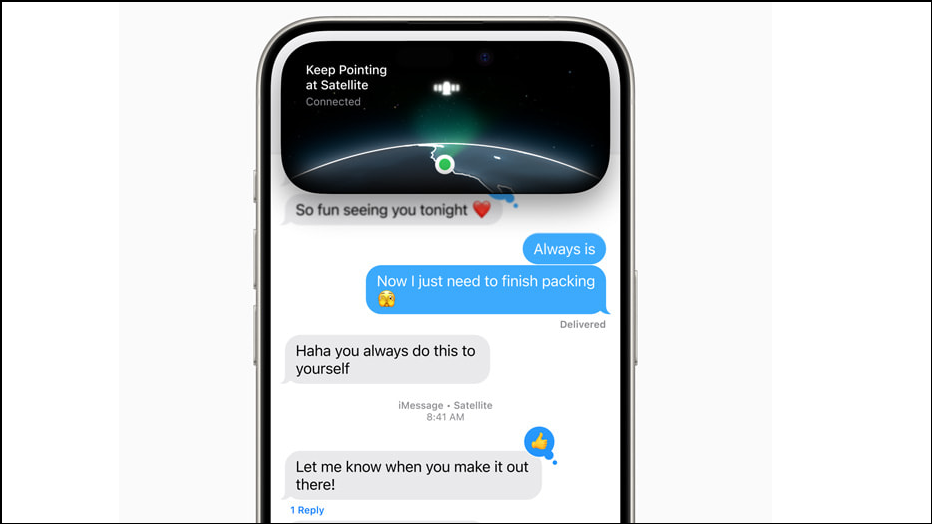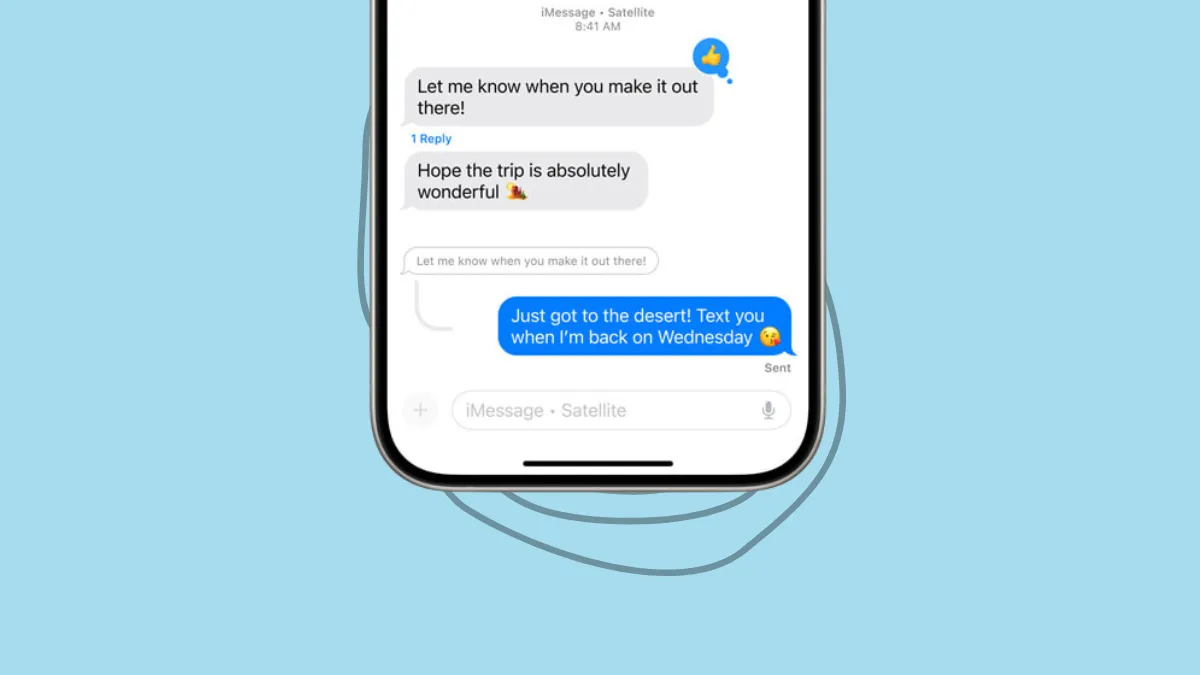The iPhone is perhaps the most popular device that Apple sells, which is why the latest update to its software, iOS 18, might be one of the most important announcements of 2024. iOS 18 brings home screen and control center customization, a revamped Photos app, an enhanced version of Siri, and more to iPhones. It also brings a feature that might make these devices less reliant on cellular networks and Wi-Fi.
This feature allows users in the US to send messages via satellite to one another, which is one of the most underrated features of iOS 18. It can be especially helpful in emergencies, but can also be used otherwise when you do not have access to cellular networks or a Wi-Fi connection. Interestingly, the feature even lets you respond with Tapbacks and emojis in addition to text messages and supports iMessage features like bubbles.

How can you use Messages via satellite?
There are a few prerequisites when using messages via satellite. Firstly, you need to be outdoors and should have a direct line of sight of the sky. Additionally, you may need to adjust your position to get a stronger connection with the satellite that will be used for sending messages. If there is dense foliage, mountains, tall buildings, or other obstructions in the way, they can cause problems connecting with the satellite.
iPhone's Dynamic Island will let you know when you are connected to a satellite. Once you're sure there are no obstructions, you can start typing your message as you would on a Wi-Fi or cellular connection.
There are two ways you can do this. You can either put your iPhone in SOS mode, which will show you a lock screen notification asking whether you want to turn Messages via satellite on. Alternatively, open the Messages app and a similar notification will appear there.
In most cases, messages sent via satellite are delivered almost instantaneously, though sometimes it can take a few seconds. Other things to keep in mind are that the feature supports end-to-end encryption and works very well with iMessage, allowing you to get all messages irrespective of who initiates a conversation.
However, if you use SMS for the same purpose, you will have to initiate the conversation, unless the person you are texting is part of Family Setup or an emergency contact. Apple has done this to prevent the network from becoming congested with promotional messages. Messages via satellite currently does not support RCS and you cannot send photos and videos using the feature. Similarly, it lets you have one-on-one conversations but does not support group chats.
Apple is expanding the number of services that utilize satellite connectivity, with Messages via satellite being the latest one. It will be available on iPhone 14 and later this year when Apple releases the stable version of iOS 18 and will first roll out in the US. Also, it is expected to be completely free, at least for now, though the company has hinted it might charge users for the feature in the future.


